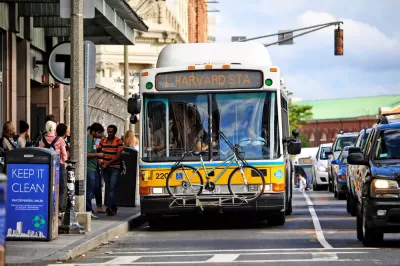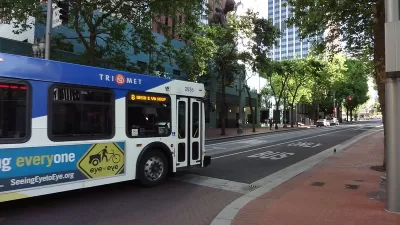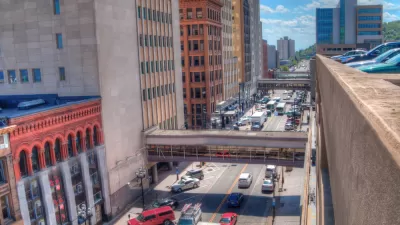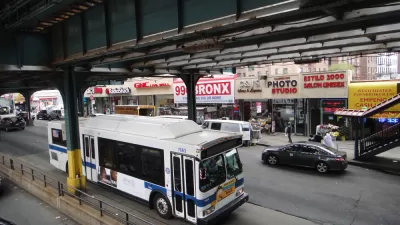A large system redesign is nearing implementation in and around Boston, but the new system map will require more drivers than the MBTA currently employs.

“The MBTA Board of Directors on Thursday unanimously approved a revised bus map that would increase the scope and frequency of service around Boston, including 30 routes planned to have buses arrive at least every 15 minutes,” reports Daniel Kool in a paywalled article for the Boston Globe.
The system redesign is expected to take effect in Fiscal Year 2023, according to the article. The system redesign is the latest to implement the concept of a high frequency grid, following most famously in the footsteps of Houston.
“The revised bus network was first announced in May and redrafted in October in response to more than 20,000 public comments. The second draft included changes to 85 of 133 initially proposed bus routes, adding or shifting lines to better reach medical facilities, walking back changes originally proposed for lines like the Route 39 bus, which runs from Forest Hills to Back Bay station, and making new cuts, including — to the ire of some riders — the Route 94 bus, which currently runs between Davis and Medford Square stations,” reports Kool.
According to the article, the MBTA presented the system redesign in context of the bus driver shortage ongoing in Boston and nationwide. According to the article, the new system will require hundreds of new drivers to maintain what is an overall increase in bus service.
The MBAT also announced new fare evasion regulations. “Under the new regulations, a first offense will earn a formal written warning before a citation is issued. First, second, and third citations would be $50, and later citations would issue fines of $100. The T is not currently issuing any citations for evasion after changes to a state law starting in 2021,” writes Kool.
FULL STORY: MBTA board approves new fare evasion regulations and a revised bus map to increase service around Boston

Trump Administration Could Effectively End Housing Voucher Program
Federal officials are eyeing major cuts to the Section 8 program that helps millions of low-income households pay rent.

Planetizen Federal Action Tracker
A weekly monitor of how Trump’s orders and actions are impacting planners and planning in America.

The 120 Year Old Tiny Home Villages That Sheltered San Francisco’s Earthquake Refugees
More than a century ago, San Francisco mobilized to house thousands of residents displaced by the 1906 earthquake. Could their strategy offer a model for the present?

HSR Reaches Key Settlement in Northern California City
The state’s high-speed rail authority reached an agreement with Millbrae, a key city on the train’s proposed route to San Francisco.

Washington State Legislature Passes Parking Reform Bill
A bill that would limit parking requirements for new developments is headed to the governor’s desk.

Missouri Law Would Ban Protections for Housing Voucher Users
A state law seeks to overturn source-of-income discrimination bans passed by several Missouri cities.
Urban Design for Planners 1: Software Tools
This six-course series explores essential urban design concepts using open source software and equips planners with the tools they need to participate fully in the urban design process.
Planning for Universal Design
Learn the tools for implementing Universal Design in planning regulations.
Ada County Highway District
Clanton & Associates, Inc.
Jessamine County Fiscal Court
Institute for Housing and Urban Development Studies (IHS)
City of Grandview
Harvard GSD Executive Education
Toledo-Lucas County Plan Commissions
Salt Lake City
NYU Wagner Graduate School of Public Service





























